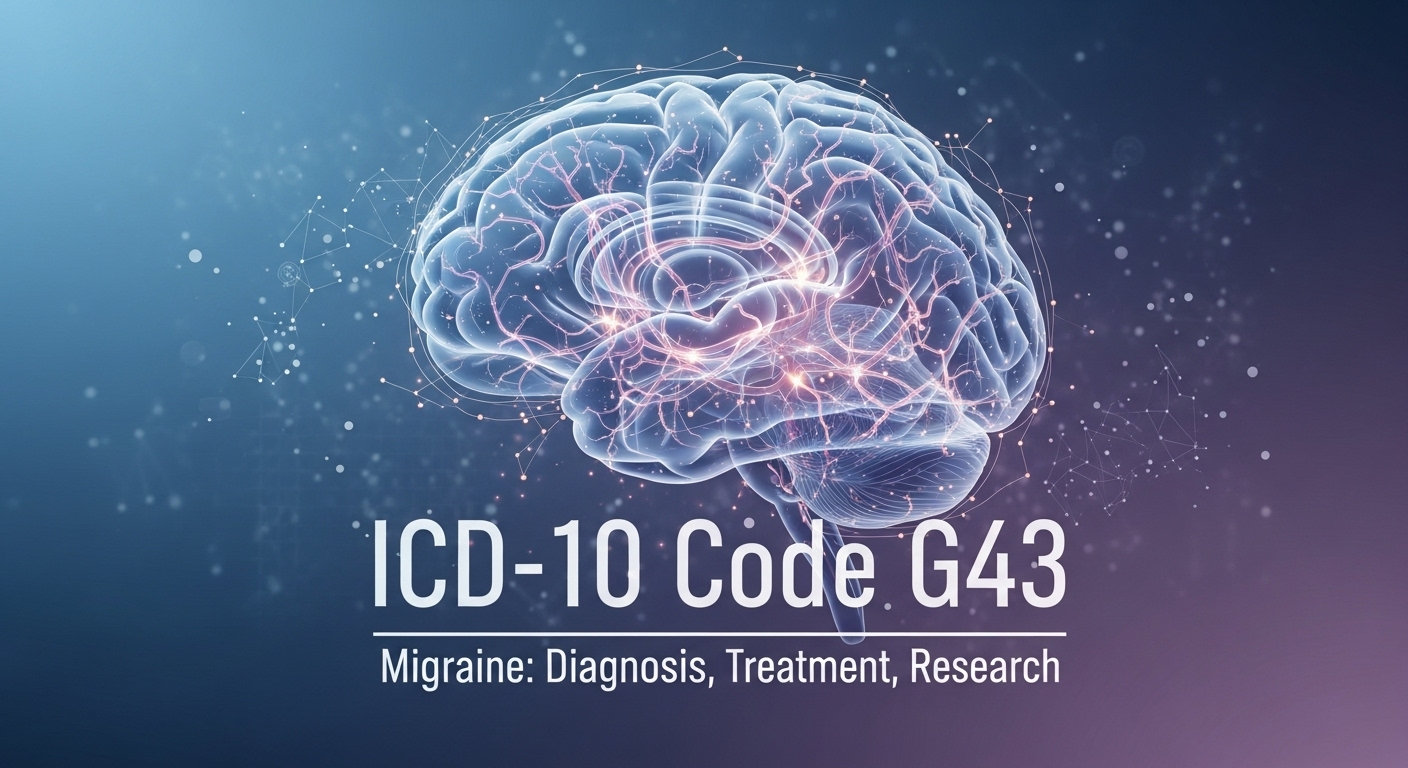In the world of medical classification, Cid10g43 is a specific code used to identify certain health conditions with precision. It plays a vital role in the International Classification of Diseases (ICD-10) system, which is used globally by healthcare providers to record, track, and analyze medical diagnoses. Understanding Cid10g43 helps doctors, patients, and researchers communicate effectively about specific illnesses, ensuring accuracy in diagnosis, billing, and treatment.
What Does Cid10g43 Represent?
Cid10g43 refers to a classification within the ICD-10 code group that deals with neurological and headache disorders. Specifically, it represents migraine, a chronic neurological condition known for causing severe headaches often accompanied by nausea, visual disturbances, and sensitivity to light or sound. The code Cid10g43 helps healthcare professionals document different types of migraines in a standardized way, which improves data collection and healthcare outcomes.
Why Cid10g43 Is Important in Healthcare
The Cid10g43 code is not just a technical label; it is an essential tool in the medical field. Hospitals and clinics use it for patient records, insurance claims, and epidemiological studies. By using Cid10g43, doctors can quickly identify migraine patterns, track patient progress, and choose the most suitable treatments. It also ensures that insurance companies and public health institutions maintain accurate and consistent data for better decision-making.
Clinical Understanding of Cid10g43
Migraine, represented by Cid10g43, is more than just a headache. It’s a complex neurological condition that can vary in intensity and frequency. Common symptoms include throbbing pain, visual auras, vomiting, and fatigue. The code Cid10g43 helps doctors categorize migraines into subtypes such as migraine with aura, migraine without aura, and chronic migraine. This categorization allows for more tailored treatment options, from lifestyle changes to medications that prevent or relieve attacks.
Diagnostic and Treatment Relevance of Cid10g43
Accurate diagnosis using Cid10g43 enables doctors to record patient data in a universally recognized format. This makes it easier for specialists to review medical histories and continue treatment seamlessly. For instance, neurologists can identify recurring patterns using Cid10g43 data, allowing them to prescribe preventive measures like dietary adjustments, stress management, and medical therapy. Moreover, research teams rely on Cid10g43 to study migraine prevalence across different populations and to develop better treatments.
Common Triggers and Risk Factors Related to Cid10g43
Patients diagnosed under Cid10g43 often have individual triggers that cause migraine attacks. Common triggers include lack of sleep, hormonal changes, dehydration, bright lights, and certain foods such as cheese or chocolate. Understanding these triggers helps reduce the frequency and severity of Cid10g43-related symptoms. Stress is another major factor, and managing it through mindfulness, exercise, and balanced routines can significantly improve patient outcomes.
Managing Life with a Cid10g43 Condition
Living with a Cid10g43 condition can be challenging, but proper management can make a big difference. Patients are encouraged to maintain a headache diary, record symptoms, and note possible triggers. Healthcare providers use this data to customize treatment strategies. Medications such as triptans, beta-blockers, or anti-seizure drugs may be prescribed depending on the type of migraine coded under Cid10g43. Complementary therapies like yoga, meditation, and acupuncture can also help reduce migraine frequency.
The Role of Cid10g43 in Medical Research
The global medical community benefits immensely from the use of Cid10g43 in research. Since it provides a standardized way to classify migraine, data from various countries can be compared easily. Researchers use Cid10g43 to identify trends, analyze treatment effectiveness, and explore the genetic factors that may contribute to migraine development. This shared classification improves the overall understanding of neurological conditions worldwide.
Future of Cid10g43 in Healthcare Systems
As healthcare technology advances, Cid10g43 continues to evolve within digital health records and AI-based diagnostic tools. With electronic medical systems adopting ICD-10 codes more efficiently, Cid10g43 will remain a key element in ensuring accurate health data management. Future updates to the ICD system will likely refine this code further to capture new findings related to migraine and its subtypes.
Conclusion
In summary, Cid10g43 stands as a critical medical classification that supports accurate diagnosis, treatment, and research in migraine-related disorders. It ensures consistency in healthcare documentation, improves patient management, and strengthens medical research worldwide. Whether used by doctors, insurance companies, or scientists, Cid10g43 remains a cornerstone in the ongoing effort to understand and control migraines effectively.
